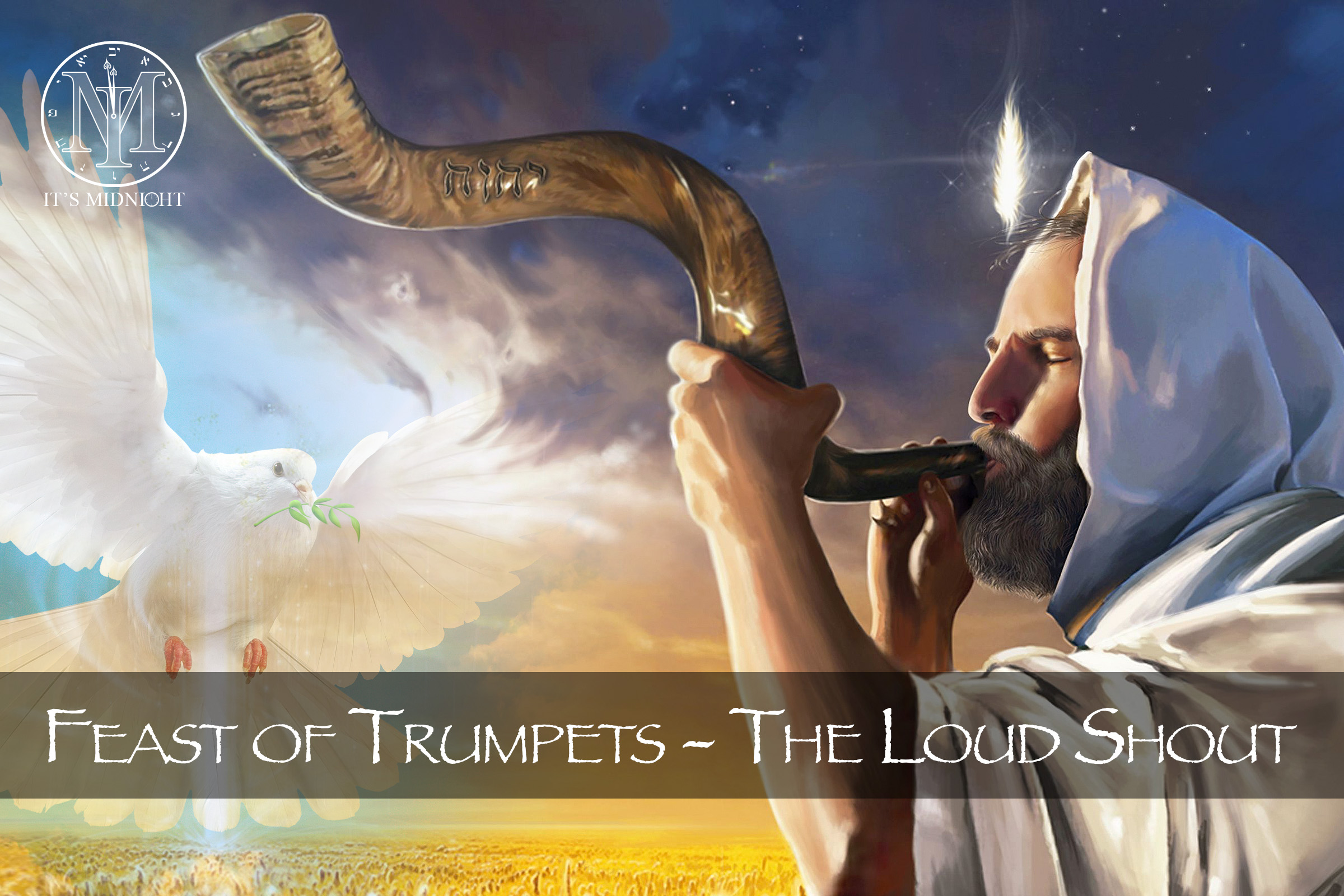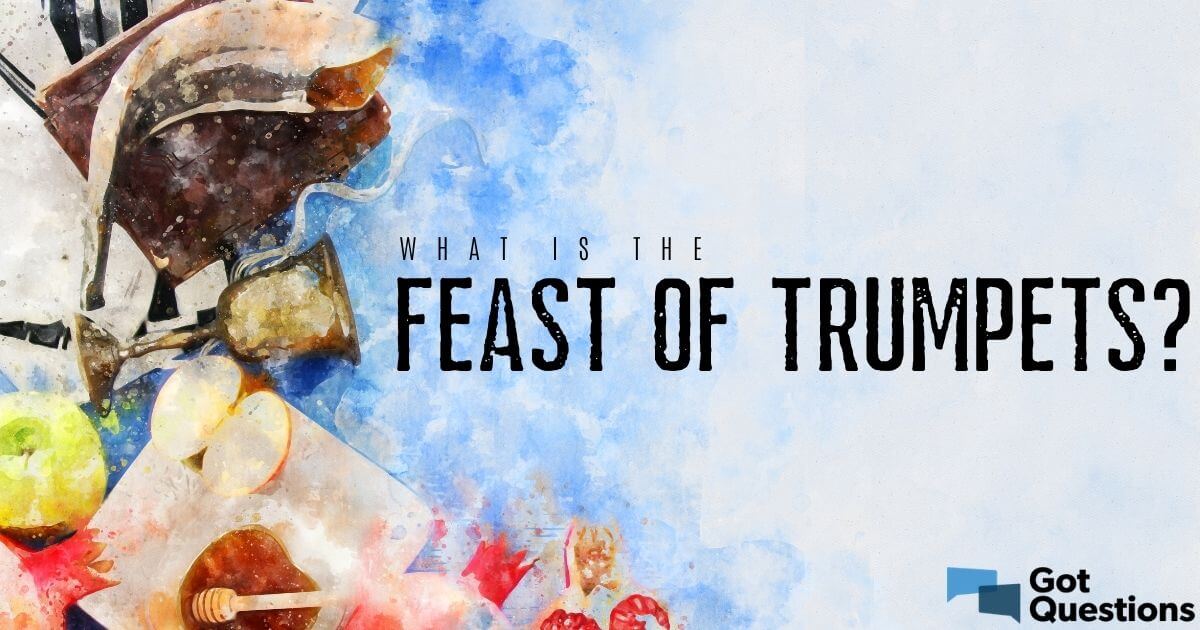Feast Of Trumpets & End Times: What You Need To Know
Could the ancient prophecies hold the key to unlocking the mysteries of our future? The convergence of biblical feasts, specifically the Feast of Trumpets (Yom Teruah), with eschatological events has captivated theologians and laypeople alike for centuries.
The echoes of the shofar, the ancient trumpet, resonate through the scriptures, heralding a time of anticipation and spiritual significance. The Feast of Trumpets, as Rosh Hashanah is biblically known, is more than just the Jewish New Year; it's a call to introspection, a prelude to the Days of Awe culminating in Yom Kippur, the Day of Atonement. The blowing of the shofar is a powerful symbol of awakening and a reminder of the ultimate judgment.
| Feast | Biblical Significance | Date (2024-2025) | Associated Practices |
|---|---|---|---|
| Feast of Unleavened Bread | Commemorates the Exodus from Egypt and the hasty departure, leaving no time for bread to rise. Symbolizes freedom from bondage. | April 22, 2024 (begins) | Eating unleavened bread (matzah), removal of leaven from homes, special Passover Seder meals. |
| Feast of Trumpets (Yom Teruah) | Marks the beginning of the Jewish New Year and a time of spiritual awakening. Symbolizes the call to repentance and the sounding of the shofar. | June 16, 2024 (speculative) & September 24, 2025 (based on Hebrew calendar) | Blowing of the shofar, special synagogue services, festive meals. |
| Day of Atonement (Yom Kippur) | The holiest day of the year, a day of fasting, repentance, and atonement for sins. | October 3, 2024 | Fasting, prayer, confession of sins, wearing of white garments. |
| Rosh Hashanah | Jewish New Year, The beginning of the Ten Days of Awe leading to Yom Kippur. | September 24, 2025 | Blowing of the shofar, apples dipped in honey, round challah bread |
The recurring question, then, is whether these ancient observances hold within them clues about the return of Christ, and specifically, the timing of the rapture? The correlation between the Feast of Trumpets and eschatological predictions stems from various factors. The Feast of Trumpets is a time of anticipation, a call to spiritual readiness, and a reminder of the Day of Judgment. These themes resonate with the teachings regarding Christ's second coming.
The Feast of Trumpets is the first of the autumn Jewish feasts and begins the "ten days of awe" that lead up to Yom Kippur, the Day of Atonement. This period is a time of introspection, repentance, and preparation. The blowing of the shofar is a call to attention, a sound that awakens the soul. The observance of the feasts within the context of the biblical Hebrew calendar, referred to as the creator's calendar, deviates from the Gregorian calendar, providing a unique framework for interpreting their significance. The biblical Hebrew calendar helps in understanding the dates of the feasts of the Lord, which are different from what the rest of the world observes.
The seven trumpets in Revelation add a layer of complexity to the discussion. These trumpets are associated with significant events in the end times. In Revelation, the sounding of the seven trumpets is a clear sign of impending doom, indicating judgments and upheavals that will affect all of humanity. While the exact timing remains a subject of debate, the trumpets themselves are unmistakable signals of divine intervention and the culmination of God's plan.
The Feast of Trumpets, known biblically as Yom Teruah, emphasizes the "day of sounding." This day is linked to the blowing of the shofar, a ritual that symbolizes a call to repentance, a summoning, and a warning. The shofar blasts are a call to prepare for the Day of Judgment and the imminent arrival of the Messiah.
The Jewish New Year, Rosh Hashanah, is literally translated as "head of the year." This marks the beginning of the "high holidays" or "days of awe," concluding with Yom Kippur. The significance of Rosh Hashanah is multifaceted, serving as a time for reflection, renewal, and the anticipation of divine judgment. The ten days between Rosh Hashanah and Yom Kippur offer a window for repentance, where individuals seek forgiveness and strive for personal transformation.
The dating of these feasts, according to the biblical Hebrew calendar, is critical. The upcoming dates, like September 24, 2025, offer a framework for considering the timing of future events, aligning them with the prophetic pronouncements about the end times. The timing of the feasts is determined by the creator's calendar, and its correlation with events within the biblical narrative adds another layer of intrigue to the subject.
One must tread carefully when attempting to predict the exact timing of eschatological events. The Bible clearly states that the exact time of the Lord's return is unknown. The scriptures caution against setting specific dates, as such endeavors have often led to disappointment and disillusionment. Nevertheless, the study of prophecy and the exploration of the biblical feasts can illuminate our understanding of God's plan and prepare us for the future.
The historical occurrences associated with the feasts provide a solid foundation for reflection and study. The Feast of Unleavened Bread, which commemorates the Exodus, is a clear reminder of God's deliverance. The Day of Atonement underscores the necessity of repentance and reconciliation with God.
The anticipation surrounding the potential connection between the Feast of Trumpets and the rapture has left some believers disappointed. This sense of disappointment is common among those who place significant expectations on specific dates. These experiences, though challenging, can teach us valuable lessons about faith, patience, and the importance of focusing on spiritual preparedness rather than a pre-determined schedule of events.
The biblical Hebrew calendar offers a unique perspective on the timing of these events. This calendar is different from the standard Gregorian calendar and is based on the cycles of the moon and the agricultural seasons. Studying the biblical feasts involves understanding this alternative method of calculating time.
Examining the historical and spiritual relevance of the feasts, while also considering the prophetic aspects and the anticipation related to the return of Christ, offers an enlightening and edifying pursuit. Engaging with these topics requires careful consideration of scripture, sound interpretation, and a spirit of humility.
The study of prophecy is about comprehending the unfolding drama of Gods plan and growing in spiritual maturity as we await the return of Christ. Whether or not the Feast of Trumpets marks a significant moment in the future remains open for discussion, but its very existence encourages us to reflect on our spiritual preparedness and to consider the eternal implications of our faith.
While the rapture could happen at any moment, the historical context and the prophetic connections associated with the Feast of Trumpets make it a focal point of many discussions. The blowing of the shofar on Rosh Hashanah, the call for repentance and renewal during the High Holy Days, and the reminders of the approaching Day of Judgment give it a unique role in the discussions surrounding the return of Christ.
The convergence of biblical feasts with eschatological events is not a new phenomenon. Numerous scholars have looked into the prophetic significance of these feasts and their potential connection with the second coming of Christ. The scriptures themselves encourage us to look ahead and prepare for the future. However, the key to approaching these questions lies in maintaining an open mind while also ensuring that our foundation is rooted in the biblical texts themselves.
The spiritual significance of the Feast of Trumpets and its connections to eschatology will continue to generate debate and interest. The study of biblical prophecy is a journey of faith, study, and reflection. The timing of the Lord's return might be unknown, but the call to remain alert and prepared is unchanging.
As the days progress and the seasons turn, the study of the biblical feasts and their eschatological associations will continue to inspire and encourage believers. May we approach these topics with humility, an open heart, and a deep desire to grasp the truth of God's Word.


